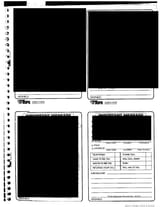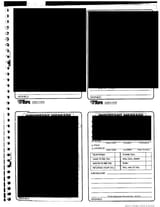>>515161467
Ikr. I won’t pivot into the COVID conspiracy right away…
4chan Search
5 results for "8d4ade9d7cbc0ce46f7da8fc2ef70b18"
>>514995631
That’s the claim. Her mail was undeliverable after the trial…
Johnson was her Jane Doe iirc. And court documents are redacted to protect the innocent l.
That’s the claim. Her mail was undeliverable after the trial…
Johnson was her Jane Doe iirc. And court documents are redacted to protect the innocent l.
• Settlement as Implicit Proof: The case settled in September 2023 for $75 million, with JPMorgan agreeing to “significant commitments” to combat human trafficking. While settlements aren’t admissions of guilt, this payout—combined with a prior $290 million settlement with Epstein survivors—lends weight to the claims, as banks rarely pay such sums without substantial evidence.
• USVI’s Complicity Counter-Claims: JPMorgan flipped the script, accusing USVI officials of being “complicit” in Epstein’s trafficking (Docket No. 124, defenses 5–8; opposed in No. 138). They alleged a “quid pro quo” where Epstein donated to officials (e.g., backing campaigns) in exchange for tax breaks, lax sex-offender monitoring, and influence over laws (e.g., No. 157–160 exhibits include emails and articles on USVI-Epstein ties). For example:
• Epstein allegedly used his USVI properties for trafficking, with officials like First Lady Cecile de Jongh acting as a “conduit” for favors (mentioned in filings).
• This mutual finger-pointing strengthens the trafficking narrative: Both sides agree Epstein ran a criminal enterprise; they just dispute who enabled it.
• Broader Evidence of Trafficking: Epstein’s 2019 federal indictment charged him with trafficking minors across state lines for sex, supported by victim testimonies of abuse on his USVI islands. The docket’s subpoenas (e.g., to Celestino White, a USVI official, No. 144–145, 152) and motions to compel Epstein estate productions (No. 154) aim to uncover transactional proof, like payments to recruiters (e.g., Ghislaine Maxwell, convicted of trafficking in 2021).
This docket doesn’t just allege trafficking—it documents the legal machinery unearthing financial trails that funded it, providing concrete proof through exhibits and witness accounts.
Picrel is an example of one of the heavily redacted files released last night.
• USVI’s Complicity Counter-Claims: JPMorgan flipped the script, accusing USVI officials of being “complicit” in Epstein’s trafficking (Docket No. 124, defenses 5–8; opposed in No. 138). They alleged a “quid pro quo” where Epstein donated to officials (e.g., backing campaigns) in exchange for tax breaks, lax sex-offender monitoring, and influence over laws (e.g., No. 157–160 exhibits include emails and articles on USVI-Epstein ties). For example:
• Epstein allegedly used his USVI properties for trafficking, with officials like First Lady Cecile de Jongh acting as a “conduit” for favors (mentioned in filings).
• This mutual finger-pointing strengthens the trafficking narrative: Both sides agree Epstein ran a criminal enterprise; they just dispute who enabled it.
• Broader Evidence of Trafficking: Epstein’s 2019 federal indictment charged him with trafficking minors across state lines for sex, supported by victim testimonies of abuse on his USVI islands. The docket’s subpoenas (e.g., to Celestino White, a USVI official, No. 144–145, 152) and motions to compel Epstein estate productions (No. 154) aim to uncover transactional proof, like payments to recruiters (e.g., Ghislaine Maxwell, convicted of trafficking in 2021).
This docket doesn’t just allege trafficking—it documents the legal machinery unearthing financial trails that funded it, providing concrete proof through exhibits and witness accounts.
Picrel is an example of one of the heavily redacted files released last night.
Poison the well!
ABSOLUTE FUCKING RETARDS


